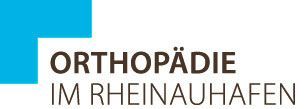Arthrosis Therapy
Arthrosis (synonyms: osteoarthritis, arthrosis deformans) is a painful, degenerative progressive joint disease. It is caused by chronic wear and tear of the joint cartilage. The hip joint (coxarthrosis), the knee joint (gonarthrosis) and the spinal column (spondylarthrosis) are particularly frequently affected, less so the finger, shoulder and ankle joints.

Arthrosis can occur at any age, although older people are affected more frequently than younger people.
The cause is usually seen to be the disproportion between the load-bearing capacity and the actual load on the joint. This can be overload (e.g. increased body weight), congenital or traumatic causes such as malpositioning of the joints or bony deformities due to bone diseases such as osteoporosis.
Due to overloading, cartilage decreases at the pressure points and, at the same time, the synovial fluid decreases, which restricts the gliding ability of the joint surfaces and irritates the synovialis (synovial membrane) due to constant friction. In addition, arthrosis can also be the result of another disease such as arthritis. This is referred to as secondary osteoarthritis. It can also be accompanied by the formation of effusion due to overuse, which is then a secondary inflammatory reaction and is referred to as activated arthrosis.
A distinction is made between symptoms and complaints of dormant and activated arthrosis.
With dormant arthrosis:
- Tension and stiffness in the joint
- Often weather-dependent pain
- Pain at the onset of movement, later constant pain under strain, finally continuous pain
- Friction noise
- Joint swelling and deformation
- Restricted agility
- With activated arthrosis:
- Acute inflammation
- Severe joint pain (even at rest)
- Swelling of the joint
- Skin redness and overheating of the joint
- Relieving posture
Basically, a distinction is made between primary and secondary arthrosis, whereby a biological inferiority of the cartilage tissue of unclear cause is assumed for the primary. Secondary arthrosis, on the other hand, is caused by mechanical overload, inflammatory changes or metabolic disorders.
There are four different stages which describe the damage to the joint as a whole:
- Stage I - early stage: significant cartilage damage (roughness and thinning of the cartilage layer), reduction of the joint space (seen in x-rays + MRI), changes in the bone under the damaged cartilage = often silent arthrosis, whereby the patients do not have any complaints yet.
- Stage II - advanced stage: hyaline cartilage is replaced by granulation tissue and inferior fibrous cartilage. Pseudocysts are formed from necrotic cartilage and bone tissue (boulder cyst), inflammations in the joint area (activated arthrosis), the patients experience stress and start-up pain.
- Stage III - late stage: the cartilage layers are largely destroyed, ulcerations occur, whereby the connective tissue and the chondrocytes proliferate, considerable inflammation of the joint.
- Stage IV - The bone plate of a joint flattens out. Bony outgrowths (osteophytes) form on the bone to absorb the pressure on the joint. Muscle shortening and hardening occur, resulting in considerable movement restrictions up to the stiffening of the joint.
There are a number of factors that can promote arthrosis.
The following possible risk factors are known:
- Overweight
- Sports with a high risk of injury and high impulse loads (e.g. soccer)
- Repetitive, unfavorable joint loads, e.g. at work (assembly line work, pneumatic hammer, etc.)
- Heavy physical labour (mining, shipyards, agriculture, construction) which overloads the joint
- Hereditary predisposition (familial)
- Lack of exercise, resulting in poor cartilage nutrition, weak muscle development and associated lack of joint stability
- Muscular imbalance = imbalance of the muscle groups around the joint
- Advancing age
- Stress caused by pre-arthrosis (=pre-damages which, according to experience, lead to premature joint wear and tear), e.g. due to a sports accident with cartilage damage to the knee. Also, an incorrect loading e.g. by pronounced O-legs and thus one-sided overloading leads to cartilage damage.
- Excessive use of the joint, e.g. in a knee joint that has to absorb an increased body weight
- Pre-operations (e.g. meniscus removal in the knee)
Diagnostic
There are various diagnostic methods for diagnosing arthrosis. First of all, the anamnesis is important in order to obtain decisive information about possible risk factors and the course of the disease. In addition, imaging techniques such as X-rays and MRI (magnetic resonance imaging) are important in order to make a diagnosis. The joint space is of particular interest because it allows conclusions to be drawn about the joint cartilage. In MRI, cartilage damage can also be detected directly. Both imaging procedures are possible at any time in our practice.
Therapy
There are a large number of therapeutic options which, although they cannot eliminate arthrosis, can reduce its progression and symptoms. The type of therapy depends on the individual type of arthrosis, the cause, the stage and the symptoms of the patient. The aim of the therapy is therefore to reduce the complaints and movement restrictions and to prevent consequential damage.
The following therapy measures are possible in our practice:
- Exercise therapy (KG, Powerplate, Cybex-Training, Biofeedback-Training)
- Various electrotherapies such as iontophoresis, galvanisation, high-voltage therapy, magnetic field therapy and cryotherapy (cold therapy)
- Hyaluronic acid injections (e.g. Hyalart)
- In combination with hyaluron injections we use the body's own enzymes-therapy
- Lasertherapy
- Kinesiotaping
Orthopedics in the Rheinauhafen
Im Zollhafen 6, 50678 Köln, Deutschland


